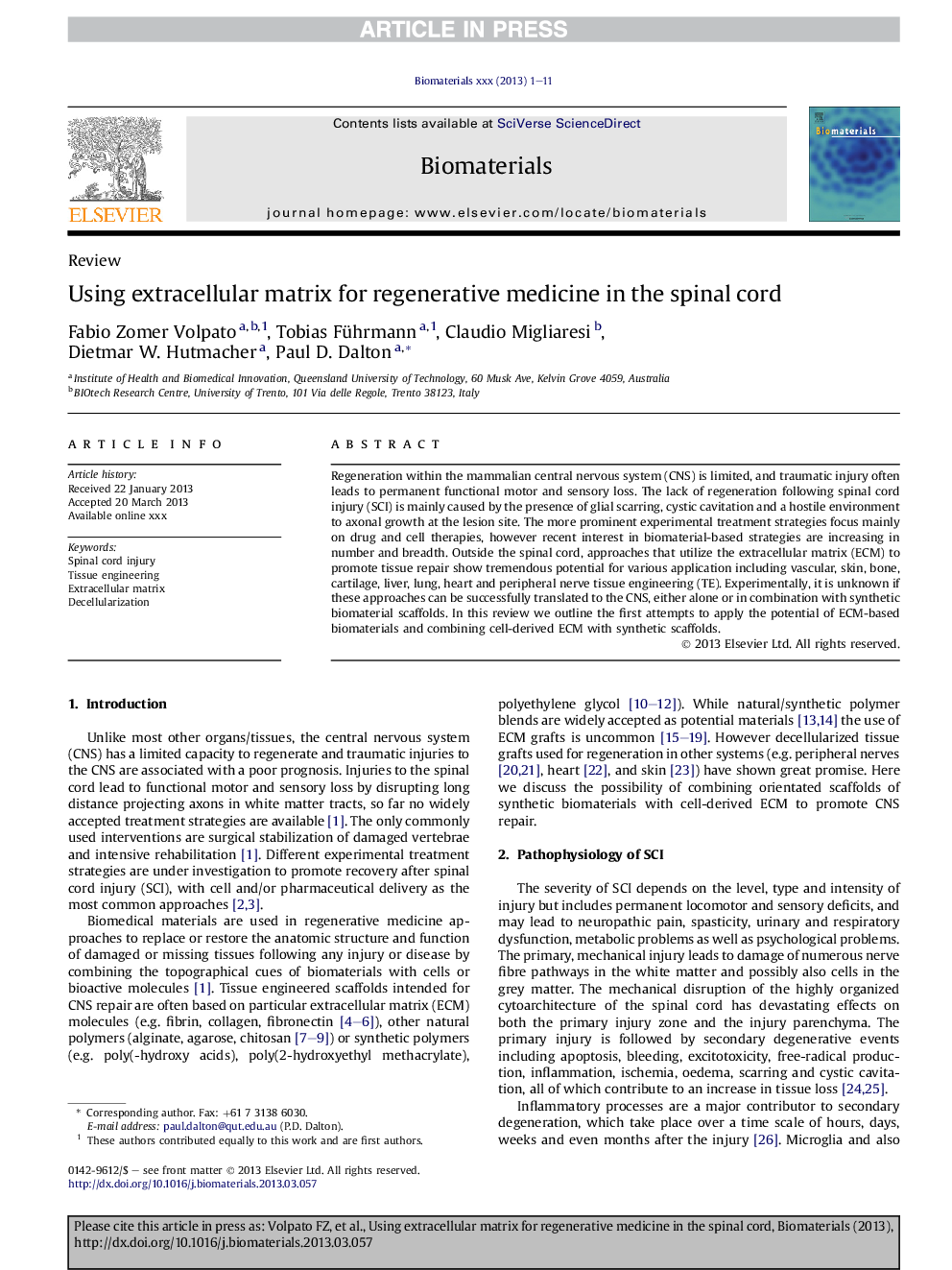| Article ID | Journal | Published Year | Pages | File Type |
|---|---|---|---|---|
| 10228965 | Biomaterials | 2013 | 11 Pages |
Abstract
Regeneration within the mammalian central nervous system (CNS) is limited, and traumatic injury often leads to permanent functional motor and sensory loss. The lack of regeneration following spinal cord injury (SCI) is mainly caused by the presence of glial scarring, cystic cavitation and a hostile environment to axonal growth at the lesion site. The more prominent experimental treatment strategies focus mainly on drug and cell therapies, however recent interest in biomaterial-based strategies are increasing in number and breadth. Outside the spinal cord, approaches that utilize the extracellular matrix (ECM) to promote tissue repair show tremendous potential for various application including vascular, skin, bone, cartilage, liver, lung, heart and peripheral nerve tissue engineering (TE). Experimentally, it is unknown if these approaches can be successfully translated to the CNS, either alone or in combination with synthetic biomaterial scaffolds. In this review we outline the first attempts to apply the potential of ECM-based biomaterials and combining cell-derived ECM with synthetic scaffolds.
Related Topics
Physical Sciences and Engineering
Chemical Engineering
Bioengineering
Authors
Fabio Zomer Volpato, Tobias Führmann, Claudio Migliaresi, Dietmar W. Hutmacher, Paul D. Dalton,
